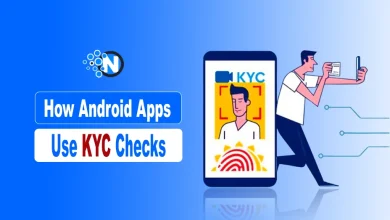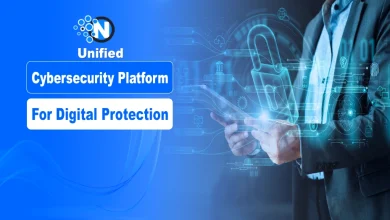Preparing for Tomorrow: Next-Generation Exposure Management and Proactive Exploit Prevention

Cyber threats are ever-evolving, and in the modern, fast-changing digital world, the traditional measures are no longer sufficient. To reduce risks, organizations must adopt next-generation exposure management and proactive preventive measures against exploits to stay ahead of attackers.
In this blog post, I will take you through the ins and outs of cybersecurity exposure management. You’ll also learn its origins and stages and how it relates to vulnerability management.
Let’s begin!
Exposure Management: Definition, Stages, and Origins
Cybersecurity exposure management is the process of identifying, analyzing, prioritizing, and remediating an organization’s attack surface.
The attack surface consists of all the potential pathways, that is, security weaknesses, that adversaries can exploit. When we say “all,” we mean everything from software and hardware to network interfaces and human factors.

What Are Exposures?
These pathways or security weaknesses are called exposures, and they include:
- Vulnerabilities: CVEs, zero days, firmware flaws, and similar.
- Misconfigurations: open ports, default credentials, verbose error messages, and more.
- IAM (identity and access management) issues: excessive user permissions, weak credentials, missing MFA (multifactor authentication), etc.
- Outdated systems and software: legacy applications, EOL (end-of-life) operating systems, and similar.
- External attack surface problems: shadow IT, public internet-facing APIs with poor authentication or authorization mechanisms, and more.
- Human factors and social engineering susceptibility: missing security awareness training, disgruntled former or current employees, and similar.
- Software supply chain and third-party risks: vulnerable libraries, compromised software updates, data exposure via partners, unmonitored remote access, etc.
- OT (operational technology) and IoT (internet of things) gaps: devices with open network access, lack of segmentation, and more.
Exposure Management’s Origin Story
Every meaningful and influential concept has a good origin story, and exposure management is no different.
Its roots go only a few years back, to Gartner’s 2022 research. The prominent tech research and advisory firm introduced this concept as a natural evolution of traditional vulnerability management. Exposure management was a response to the growing complexity of digital environments and the need for a more comprehensive approach when dealing with security weaknesses.
Gartner originally envisioned exposure management as a critical program that combines multiple technologies—such as breach and attack simulation, attack surface management, and automated penetration testing—to reduce the risk of cyberattacks.
Building upon this foundation, the firm later introduced CTEM (continuous threat exposure management), a framework that allows organizations to manage security risks efficiently and effectively through continuous exposure assessment, prioritization, validation, and remediation.
This development underlined the industry’s transition toward a markedly integrated and proactive approach to managing cybersecurity risks.
The Stages of Exposure Management
The number of stages in exposure management can vary depending on the framework, methodology, cybersecurity vendor, and organization. The most common representations contain five, but you’ll also come across four or even six stages.
Here, we follow Gartner’s original five CTEM stages:
Continuous Exposure Management Stages
| CTEM Stage | Description |
|---|---|
| 1. Scoping | Define the scope of CTEM efforts by identifying which assets and systems are included in the program. |
| 2. Discovery | Identify all digital and physical assets, vulnerabilities, and exposures within the defined scope. |
| 3. Prioritization | Rank and assess the identified exposures based on factors like risk, exploitability, and potential impact. |
| 4. Validation | Continuously test and validate exposures by simulating real-world attack scenarios to confirm their risk. |
| 5. Mobilization | Implement remediation actions to reduce exposure, such as mitigation, patching, updates, or upgrades. |
Keep in mind that exposure management and CTEM are not identical, although they’re inextricably related and, because of that, often used in conjunction.
Exposure management is a broad concept, or, in other words, the overarching discipline. CTEM, on the other hand, is Gartner’s framework that operationalizes the principles of exposure management in one particular way. This implies that there can be more than one implementation of these principles (hence, the different numbers of stages in different representations).
Since CTEM formalizes a cyclical management process, and exposure management is all about continuity—cyclicity without redundancy, we give precedence to Gartner’s CTEM over other representations.
Cybersecurity Exposure Management and Vulnerability Management
Cybersecurity exposure management and vulnerability management, although often confused, are distinct yet complementary approaches to addressing cyber risks.
Vulnerability management traditionally focuses on identifying, prioritizing, and remediating known vulnerabilities, often by scanning systems for CVEs (common vulnerabilities and exposures).It revolves around patching and usually operates on a cycle of scanning, assessment, and remediation, prioritizing the vulnerabilities with the highest CVSS scores.
No doubt, vulnerability management is necessary to retain a baseline level of security. However, it’s insufficient by itself; it cannot deliver a holistic view of security risk since it’s limited to CVEs.
Besides, cybersecurity vulnerability management often does not account for the wider context of an organization’s unique environment, since it can disregard the actual exploitability of a vulnerability in a real-world attack scenario at the expense of CVSS scores.
Exposure management, on the other hand, brings a much more strategic and holistic perspective to the table. It includes vulnerability management but goes further by dealing with the entire attack surface. That means all those exposures we discussed earlier, in addition to CVE vulnerabilities.
Exposure management also adopts a risk-based approach. It aims to understand how adversaries see and exploit your organization’s assets, prioritizing remediation based on actual business impact and exploitability rather than CVSS scores in a vacuum.
Exposure Management vs. Vulnerability Management
| Aspect | Exposure Management | Vulnerability Management |
|---|---|---|
| Scope | Covers the entire attack surface including vulnerabilities, misconfigurations, access risks, and external exposures. | Focuses primarily on identifying and fixing software vulnerabilities. |
| Approach | Holistic and risk-based, incorporating threat simulations and prioritization aligned with business impact. | Mostly technical and compliance-driven, focusing on scanning and patching vulnerabilities. |
| Asset Coverage | Includes digital, physical, cloud, third-party, and operational technology assets. | Primarily software, operating systems, and network devices. |
| Validation | Uses continuous testing such as breach and attack simulation to validate actual exploitability. | Relies mostly on vulnerability scanning and occasional penetration tests. |
| Goal | Proactively reduce overall exposure and risk by managing all attack vectors and validating the security posture continuously. | Reactively reduce the number of known vulnerabilities to improve system security. |
What Does Proactive Exploit Prevention Entail?
Proactive security entails prevention, which involves taking anticipatory actions to reduce or eliminate security risks before threat actors can exploit them. Realistically, complete prevention is impossible, but if you make the right moves on time to prevent exposure, you’ll spend much less time responding to cyberattacks.
Proactive exploit prevention is possible through specific techniques and technologies, such as:
- Mitigation
- Constant monitoring
- Prompt discovery of exposures and attack attempts
- Real-time threat blocking
- Autonomous application control
- AI- and ML-fueled security technologies
- Zero trust
- Automation
This list is by no means exhaustive, but it’s sufficient to point to where to look for proactive exploit prevention.
Next-Generation Exposure Management
Remediation is at the heart of exposure management. Every other stage makes sense only if it leads to remediation. The same is true for vulnerability management, which is why it puts so much emphasis on patching, as it’s seen as fixing vulnerabilities for good.
However, with proponents understanding that exposure management involves an advanced approach, they also recognize that patching entails insurmountable functional problems:
- Exhaustive, across-the-board patching is impracticable, especially considering that for many types of security weaknesses, there cannot be a patch or a final solution in terms of removing their root causes. The clearest examples are exposures in out-of-support legacy software, subpar access controls, system architecture flaws, zero-day vulnerabilities, and misconfigurations like S3 buckets left publicly accessible in cloud environments.
- Patching is typically an unduly prolonged process due to major logistical reasons, such as asset ownership, approval chains, testing demands, downtime requirements, dependency management, and resource constraints.
For these reasons, whether it’s a temporary measure to protect against an active threat, or a long-term strategy for an unpatchable weakness, mitigation, as a form of remediation, has become an indispensable and major component of effective exposure management. It’s about pragmatic risk reduction when faced with complex realities.
Mitigation means:
- Rapid risk reduction: When a direct fix (like a patch) for a vulnerability or misconfiguration isn’t immediately available or feasible, interim mitigation provides critical protection.
- Bridging the gap: Mitigation acts as a vital bridge during delayed patching cycles. Exposure management seeks to minimize the window of vulnerability, and mitigation is key to achieving this feat.
- Holistic risk view: If an attack path relies on an exposure that you can’t patch quickly, implementing strong mitigation breaks the path, effectively remediating the exposure, even if the underlying code flaw still exists.
- Managing unpatchable exposures: As discussed earlier, not all weaknesses have patches. For these, mitigation strategies, like network isolation or compensating controls, become the primary and often permanent means of managing exposure.
The question, then, is, why postpone mitigation? Why not mitigate first and manage exposures later?
This patchless mitigation-first approach is the landmark of next-generation exposure management.
Next-gen exposure management doesn’t make the other stages dispensable. Instead, it espouses technologies that cover most of your exposures immediately after deployment, so you can buy time to pinpoint the most severe weaknesses and remove their root causes without the risk of imminent exploitation hanging over your head.
Currently, the most complete security solution of this type is OTTOGUARD.AI. It combines patented zero-trust technology, automation, AI agents, runtime protection, lockdown mode, autonomous application control, continuous monitoring, real-time threat blocking, and just-in-time access to provide immediate workload patchless mitigation.
Final Thoughts
This proactive stance moves beyond the endless cycle of reactive patching and alert fatigue. It’s a strategic pivot that makes it possible for businesses and organizations to stay protected even against the most fearsome and stubborn perils like ransomware. And finally, it’s the most promising approach to prepare for what tomorrow brings.




